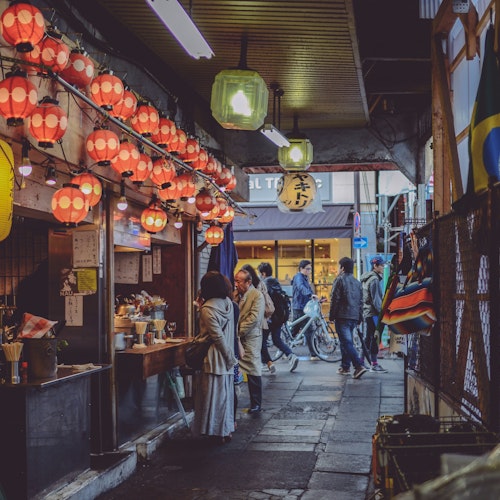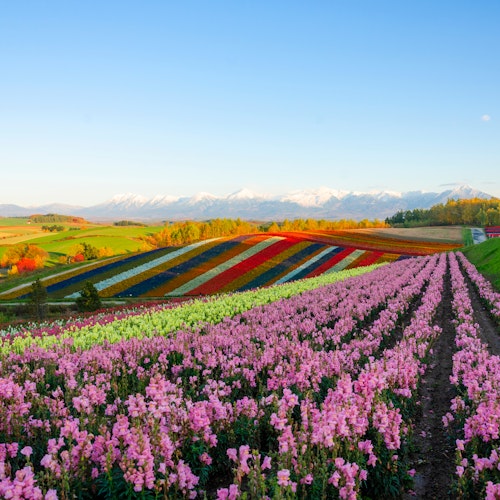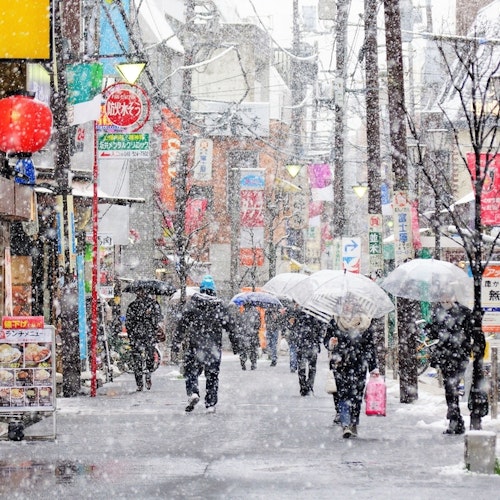
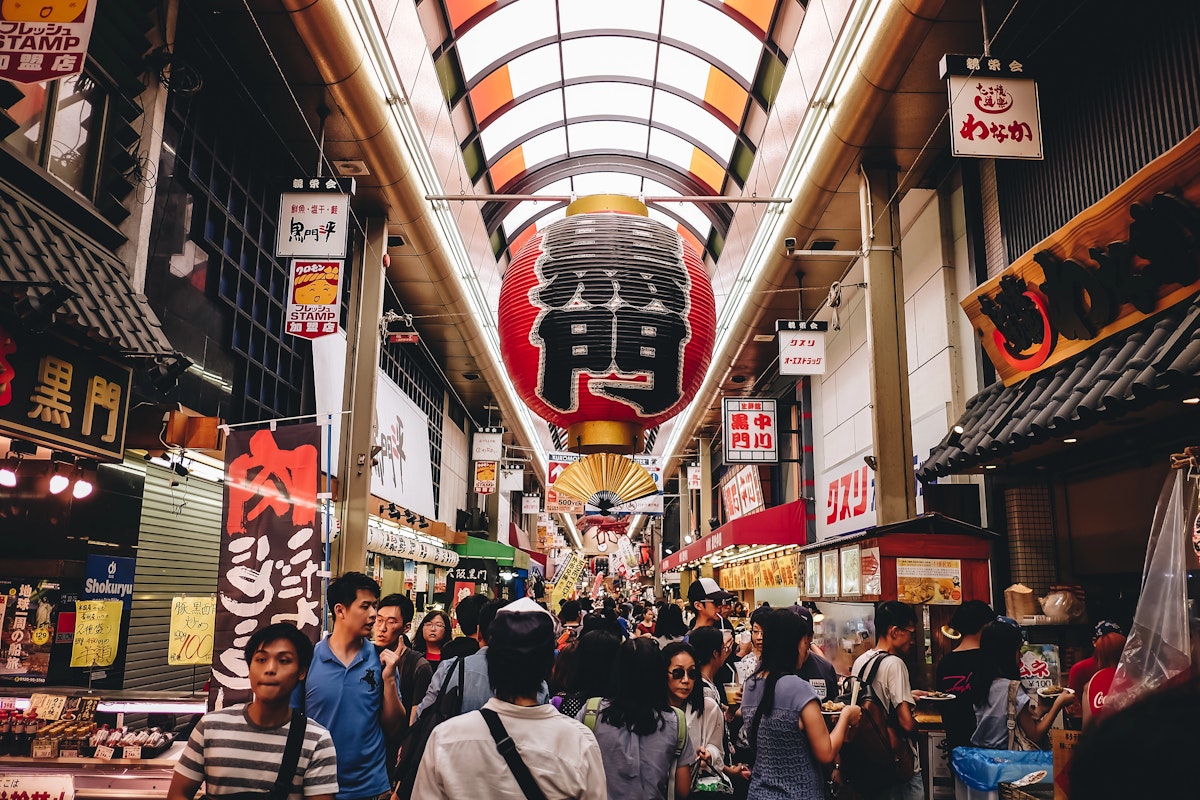
Osaka, known as Japan's kitchen, is a paradise for food lovers and shoppers alike. It's a city where the vibrant culture and history are as enticing as the food options.
Among Osaka's many charms are its local markets. These bustling hubs are not just places to buy fresh local produce or find quirky souvenirs; they're a cultural trip into the heart of Osaka. This article will take you through the thriving local markets in Osaka, offering a glimpse into the heart of the city's daily life and the fantastic food culture.
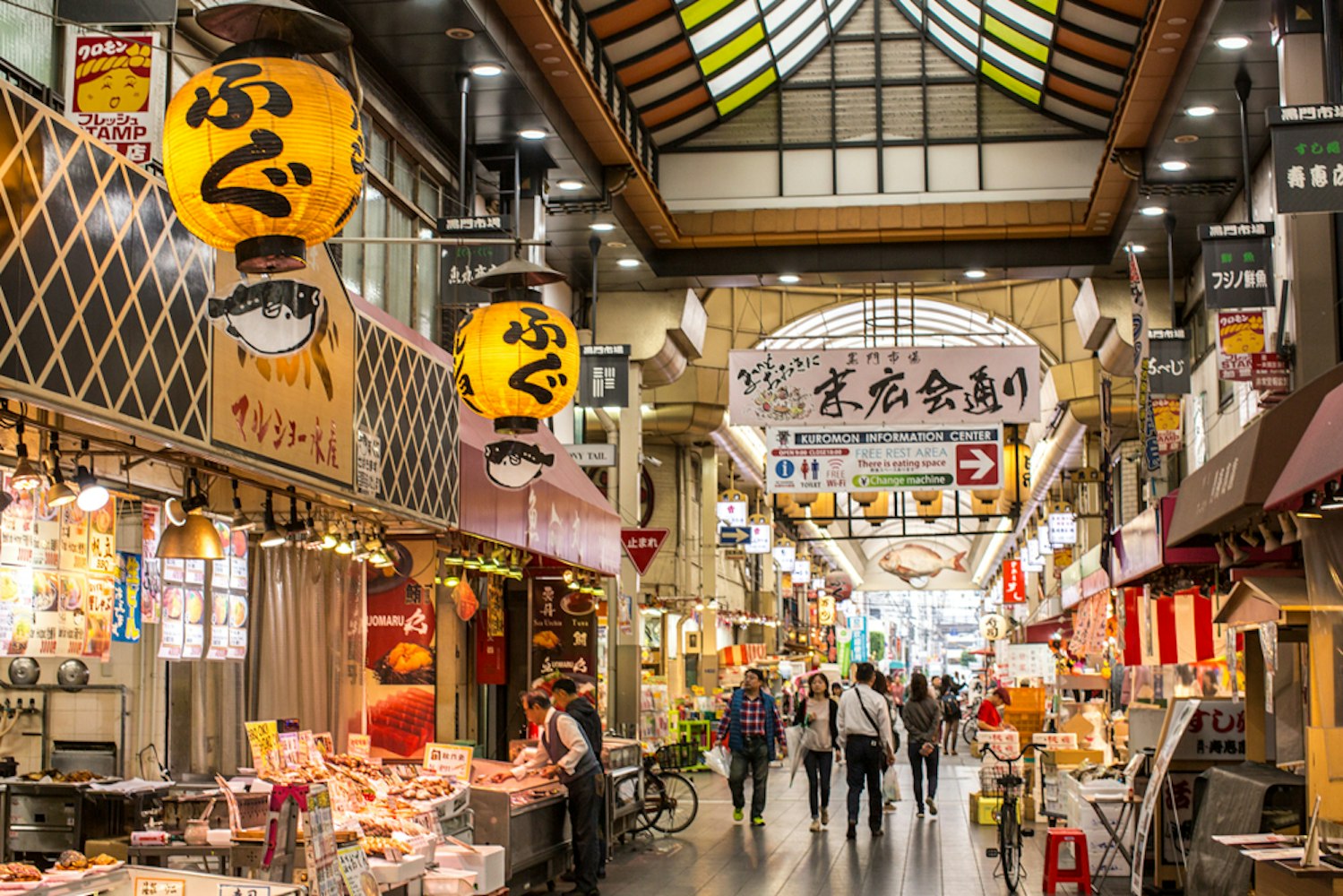
Kuromon Ichiba Market, renowned as "Osaka's Kitchen," serves both local homeowners and restaurant chefs with its fresh seafood across 600 meters, featuring around 150 shops. These shops offer a wide range of products, including fresh fish, meat, produce, traditional sweets, clothing, and homeware.
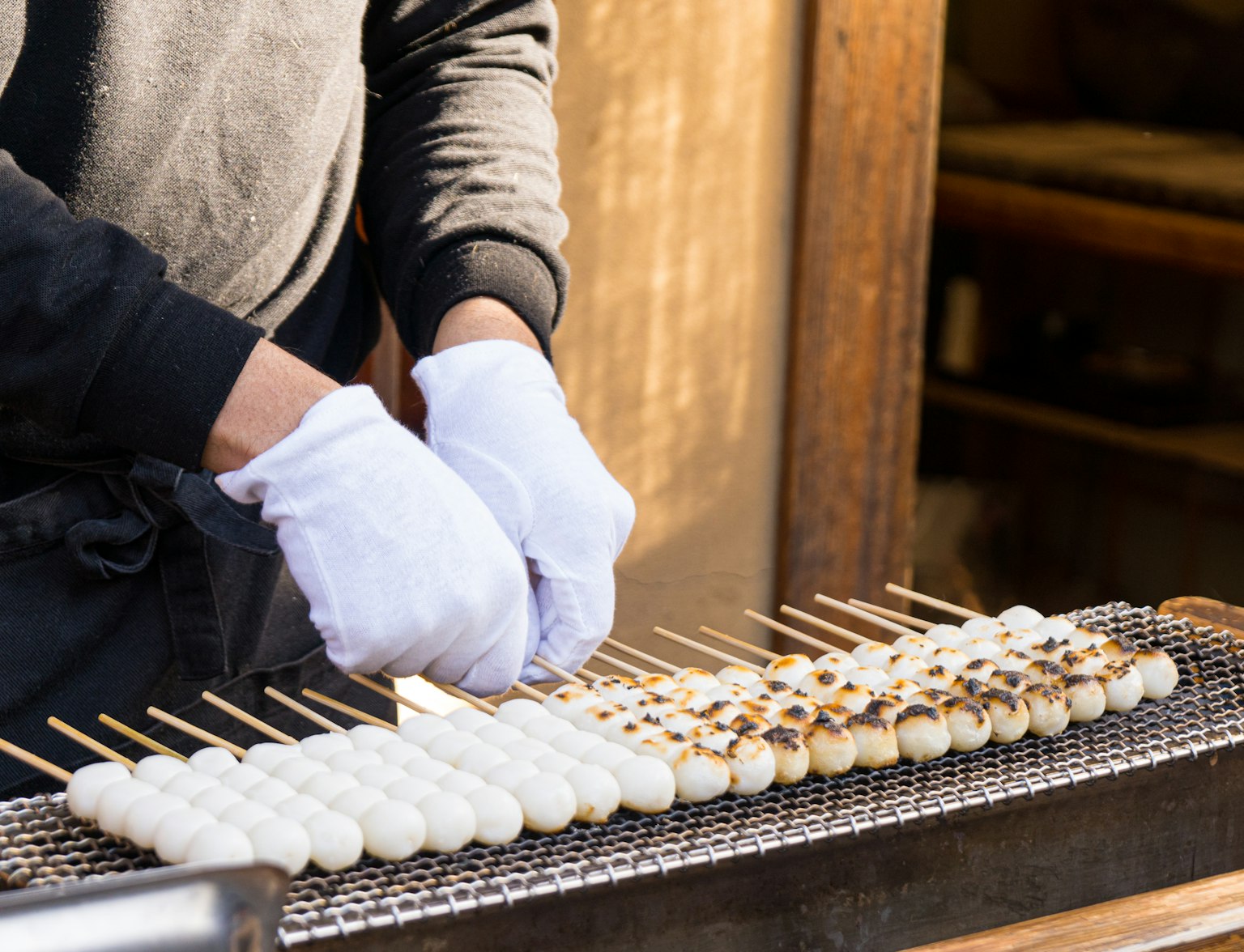
Embark on a culinary journey through the heart of Osaka as you explore the bustling Kuromon Market.
This huge market, which dates back to the Edo Period, is a popular spot for locals and tourists, blending shopping with the experience of trying various street foods. It provides an authentic taste of Osaka's culinary scene, making it a must-visit destination for food enthusiasts and culture seekers.
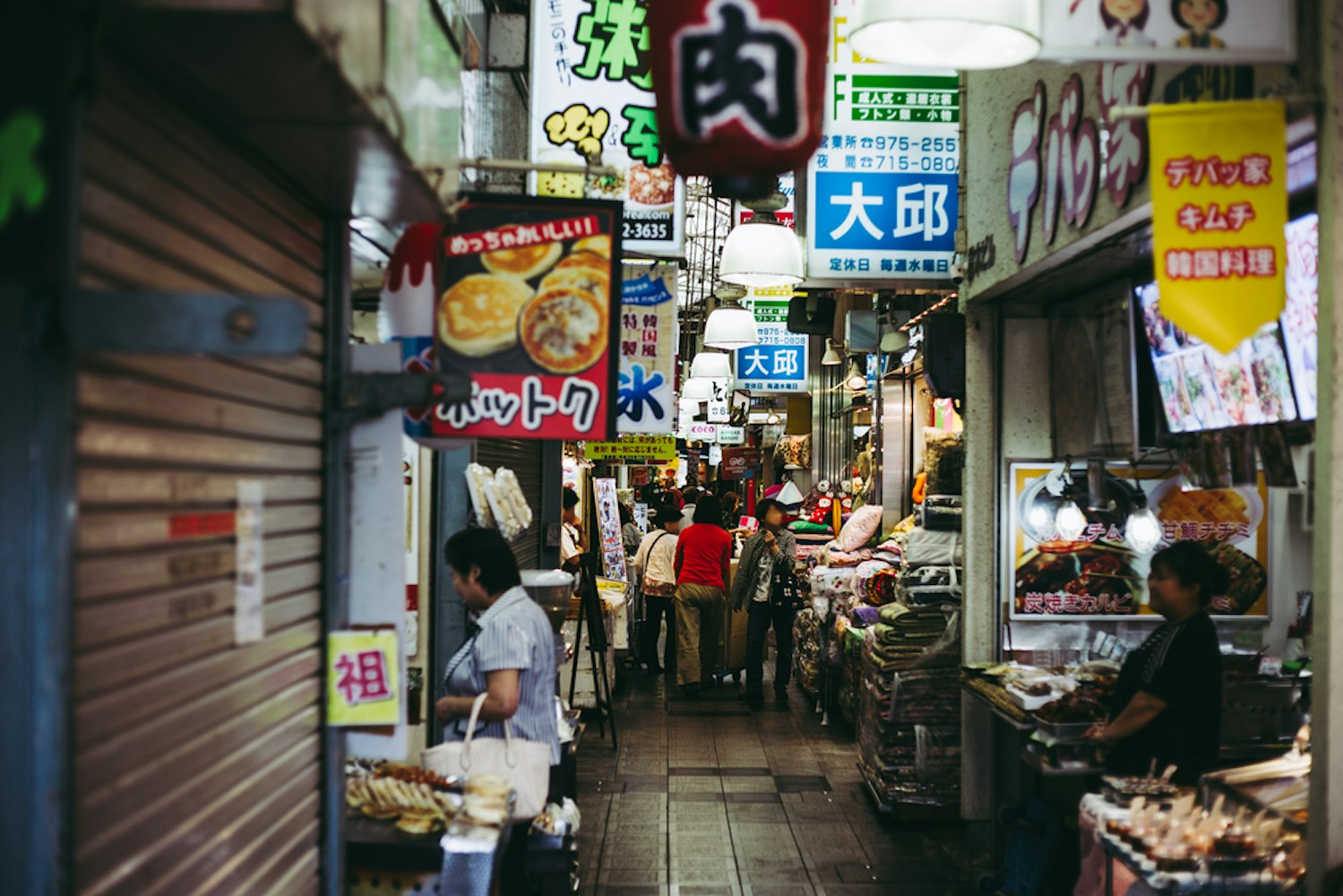
Ikuno Korea Town in Osaka offers a unique cultural experience that brings the essence of Korean culture to Japan. This area, especially Miyuki-dori, the main shopping street, has been a centre for Korean merchants since the early 20th century, particularly post-World War II, when the Korean community began to expand significantly.
Today, the street has about 120 stores offering diverse Korean foods and products, from traditional Korean street food to K-pop merchandise. The fusion of Japanese and Korean cultures here provides an authentic and immersive experience reminiscent of walking through the streets of South Korea itself.
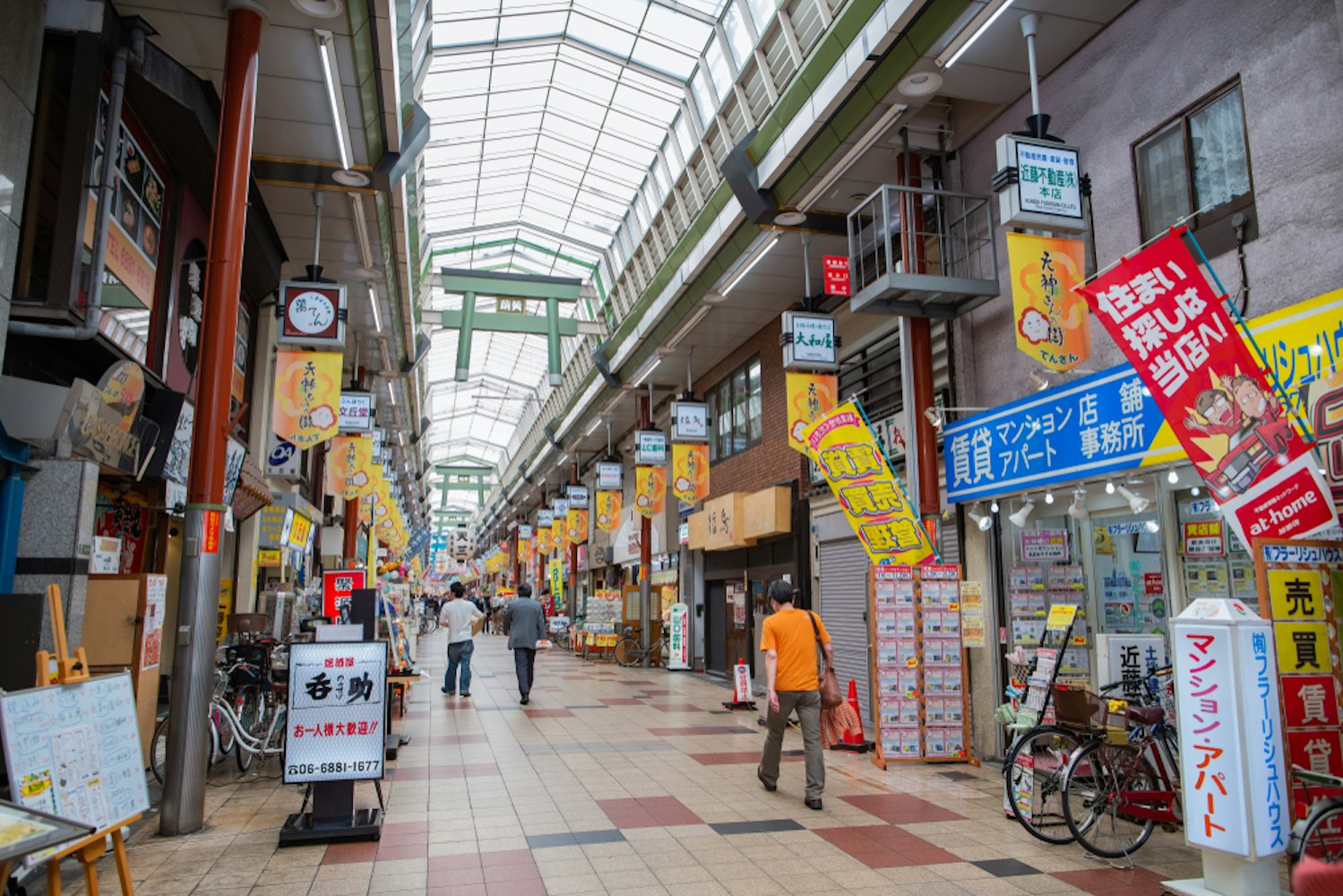
Tenjinbashi-suji Shopping Street, recognized as Japan's longest shopping street, stretches an impressive 2.6 kilometres. This expansive street offers around 800 stores, including traditional shops, food stalls, and modern retail outlets.
Its rich history dates back to the Edo era, initially flourishing due to its proximity to the Osaka Tenmangu Shrine and evolving into a bustling commercial hub in the Meiji era. Today, Tenjinbashi-suji serves as a shopping destination and a cultural experience, reflecting Osaka's vibrant heritage and contemporary lifestyle.
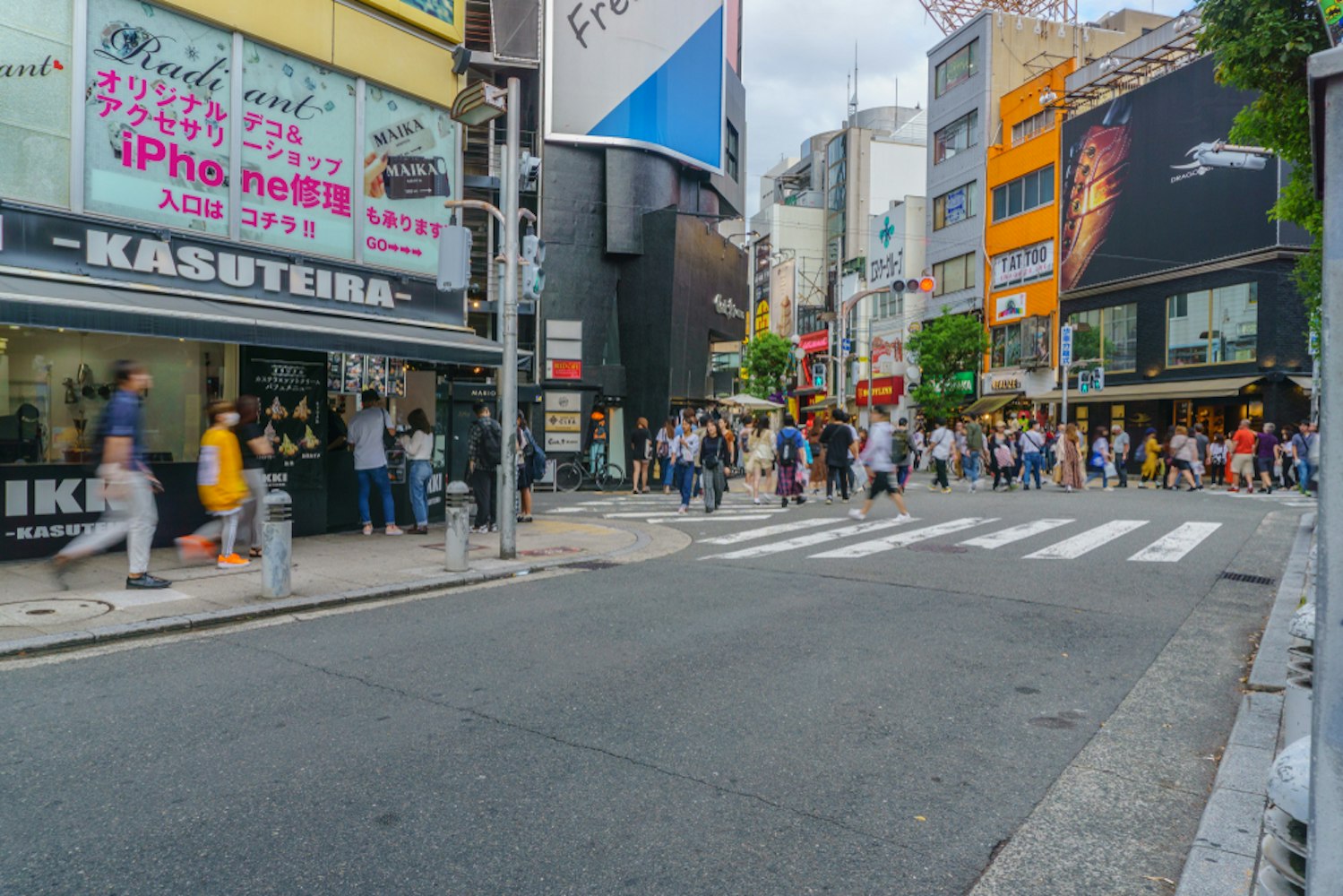
Amemura, or American Village, is a vibrant retail and entertainment district in Osaka, Japan, blending Western and Japanese culture. This area, near Shinsaibashi Station and extending from Nagahori Street to Dotombori, is characterized by its mix of trendy shops, street food, and lively nightlife.
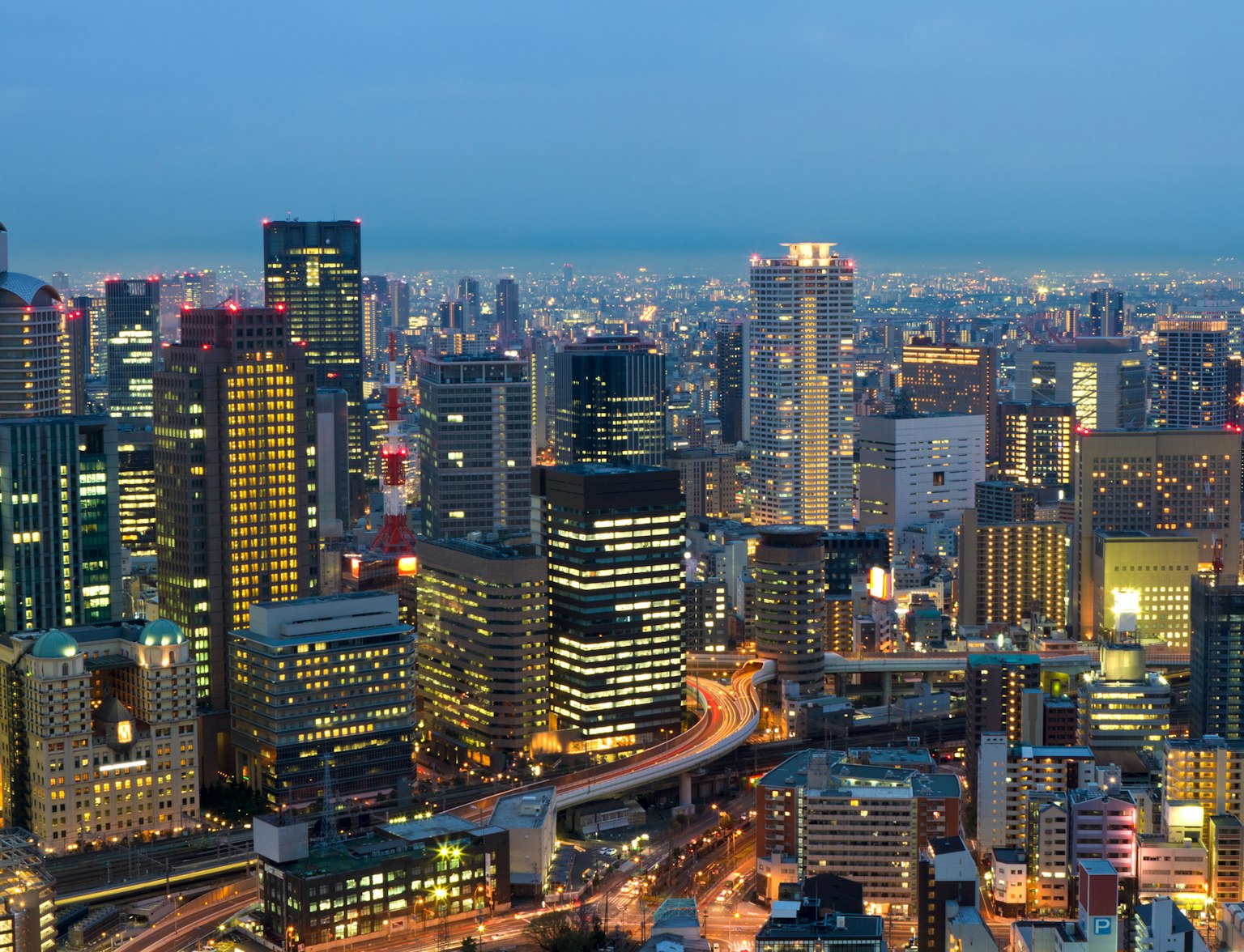
Visit Amemura with this tour.
Amemura, widespread among the youth, is a hub for fashion and pop culture, featuring a range of nightclubs and bars, some run by Westerners. While showcasing Western influences, the district predominantly reflects Japanese fashion and culture, offering a unique East-meets-West experience.
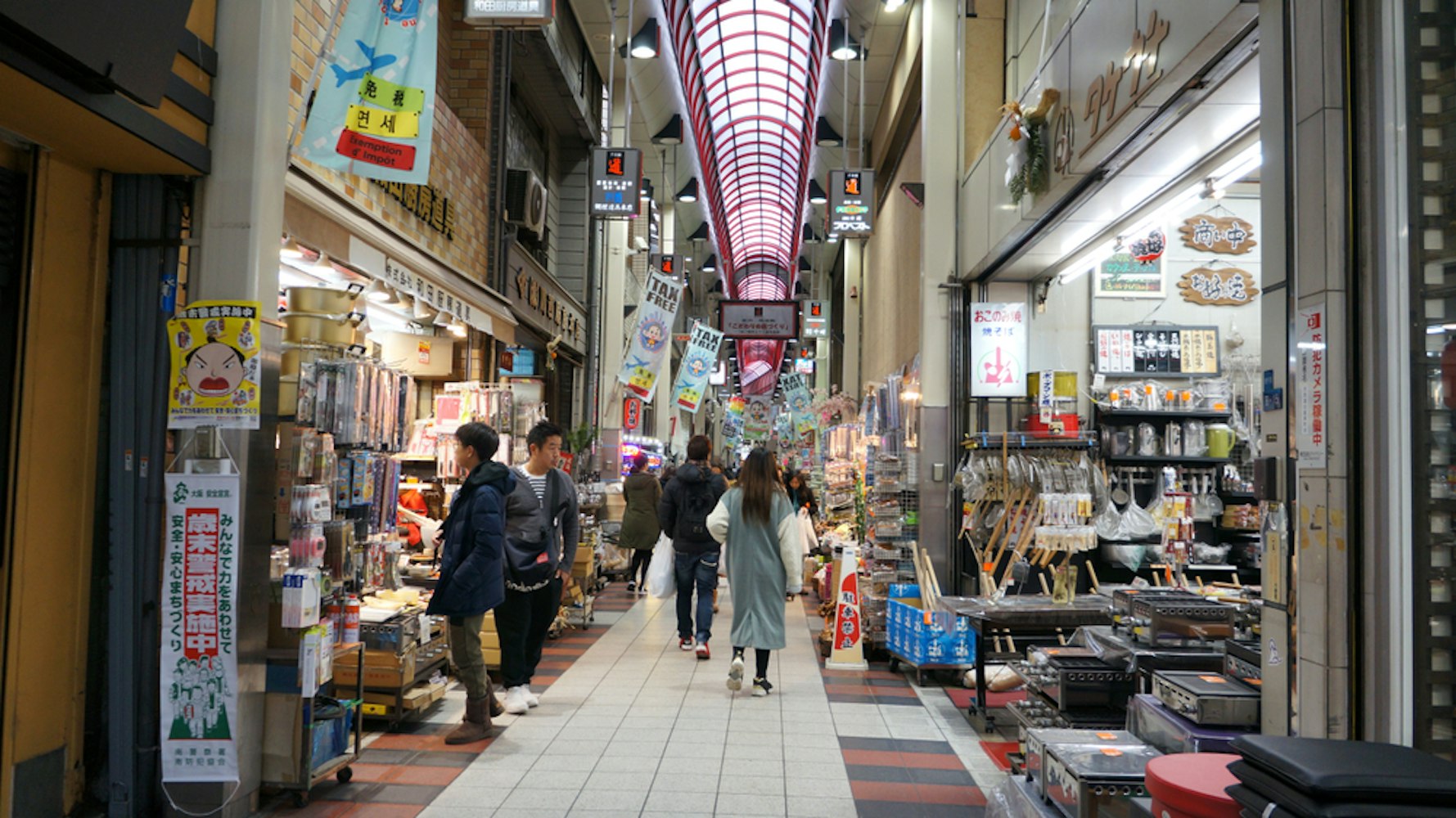
Sennichimae Doguyasuji Shotengai, located in Osaka's Minami district, is a 150-meter-long shopping arcade renowned for its speciality shops offering a wide range of cookware, kitchen utensils, and restaurant supplies. This area, historically a pilgrimage route, evolved from a black market post-World War II into a thriving hub for professional restaurant chefs and culinary enthusiasts.
It is celebrated for its various appliances, tableware, cooking accessories, and unique items like plastic replica food and restaurant signage. Established in the 1970s, the shopping arcades are a go-to destination for reasonably priced kitchenware and host events like the Doguyasuji Festival, featuring street-side cooking and knife-grinding demonstrations.
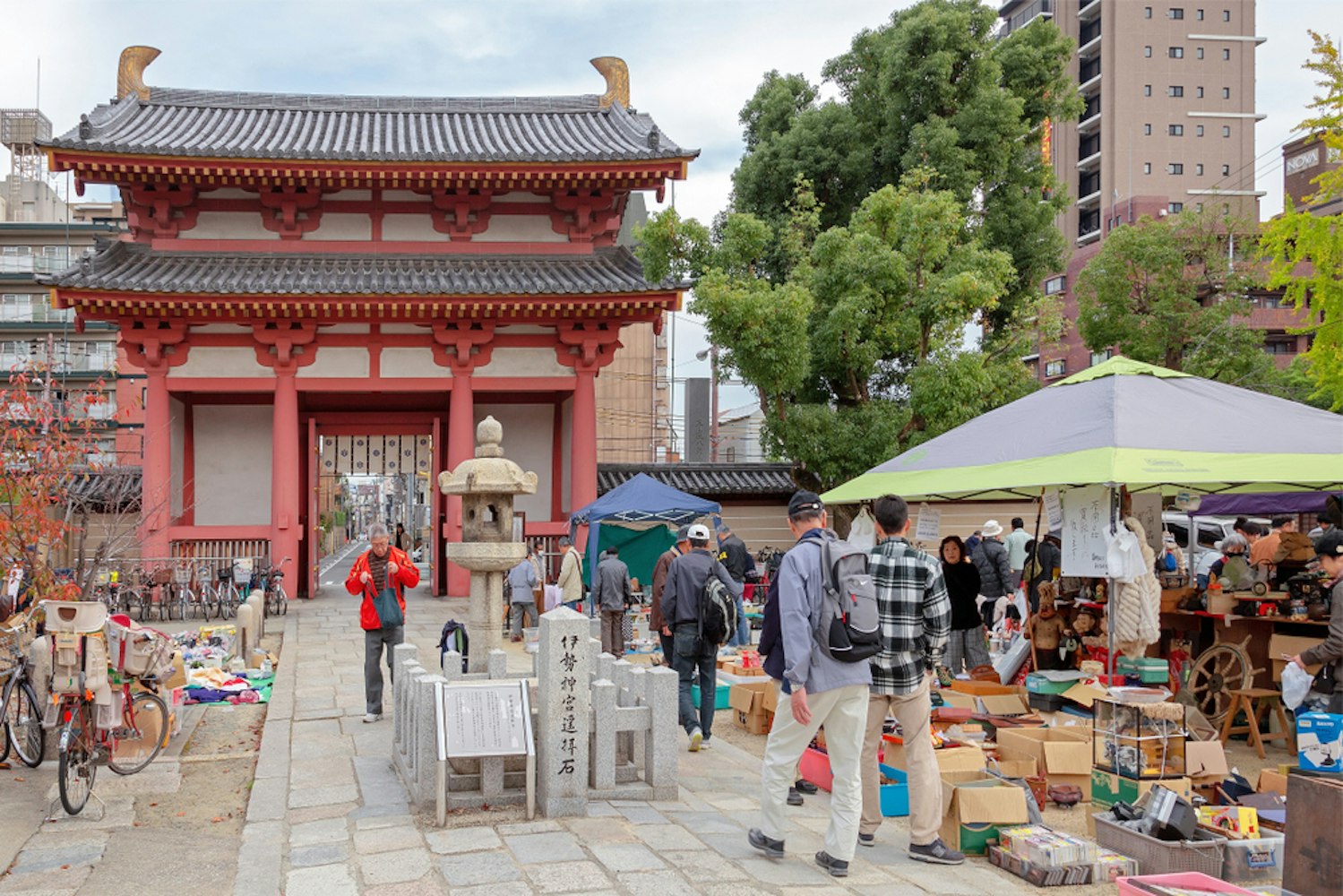
Shi-Tennoji Temple Market, held on the 21st and 22nd of each month in Osaka, is a vibrant flea market located on the grounds of the historical Shi-Tennoji Temple. This lively event is free to enter and features around 300 stalls offering various items, including textiles, ceramics, second-hand clothes, antiques, and bric-a-brac.
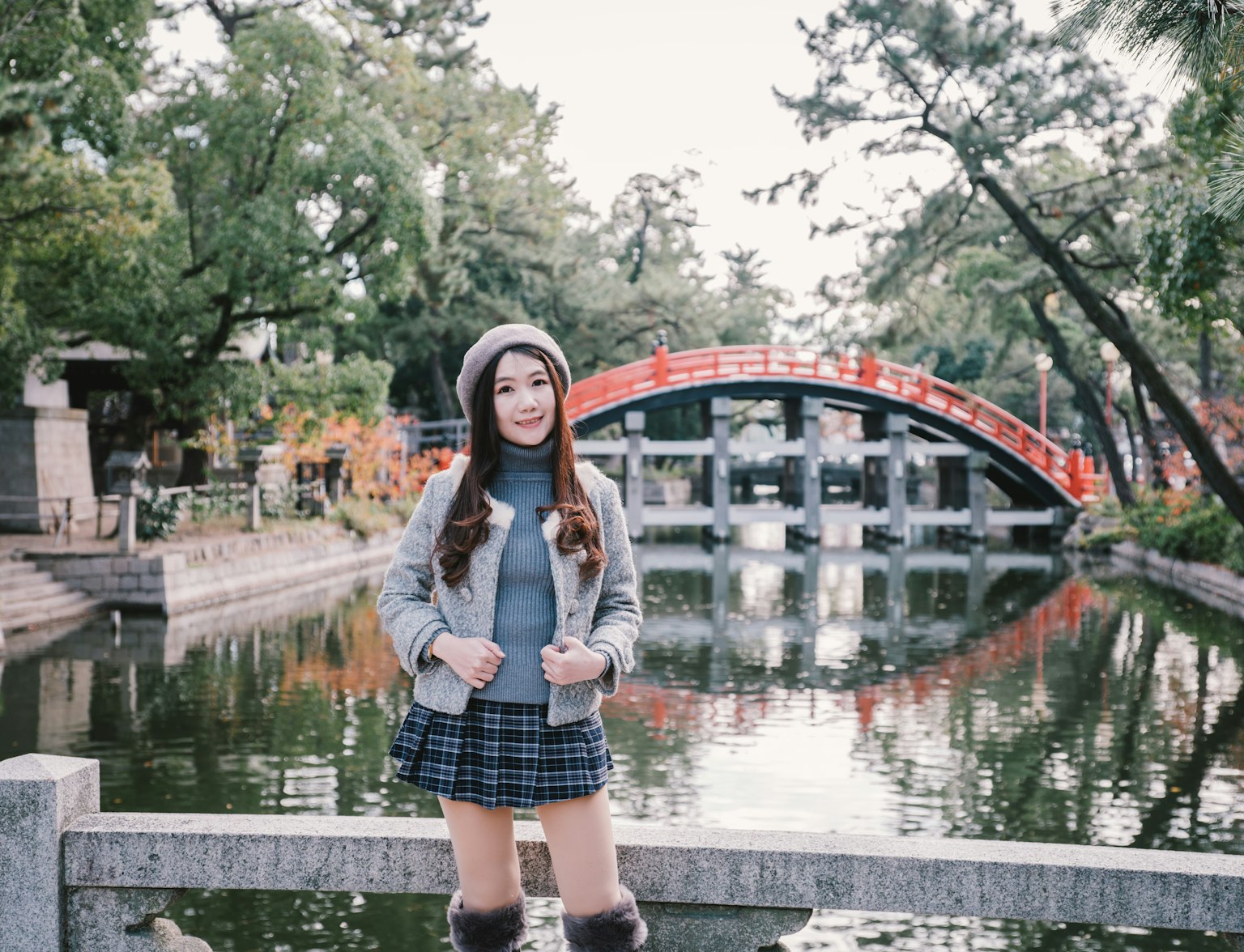
Visit one of Japan's oldest temples, Shitennoji Temple.
In addition to shopping, visitors can enjoy a variety of local Osaka foods like takoyaki and okonomiyaki at the food stalls scattered throughout the market. The market blends cultural experience and shopping opportunities, attracting locals and tourists looking to experience a traditional Japanese market atmosphere and find unique items.
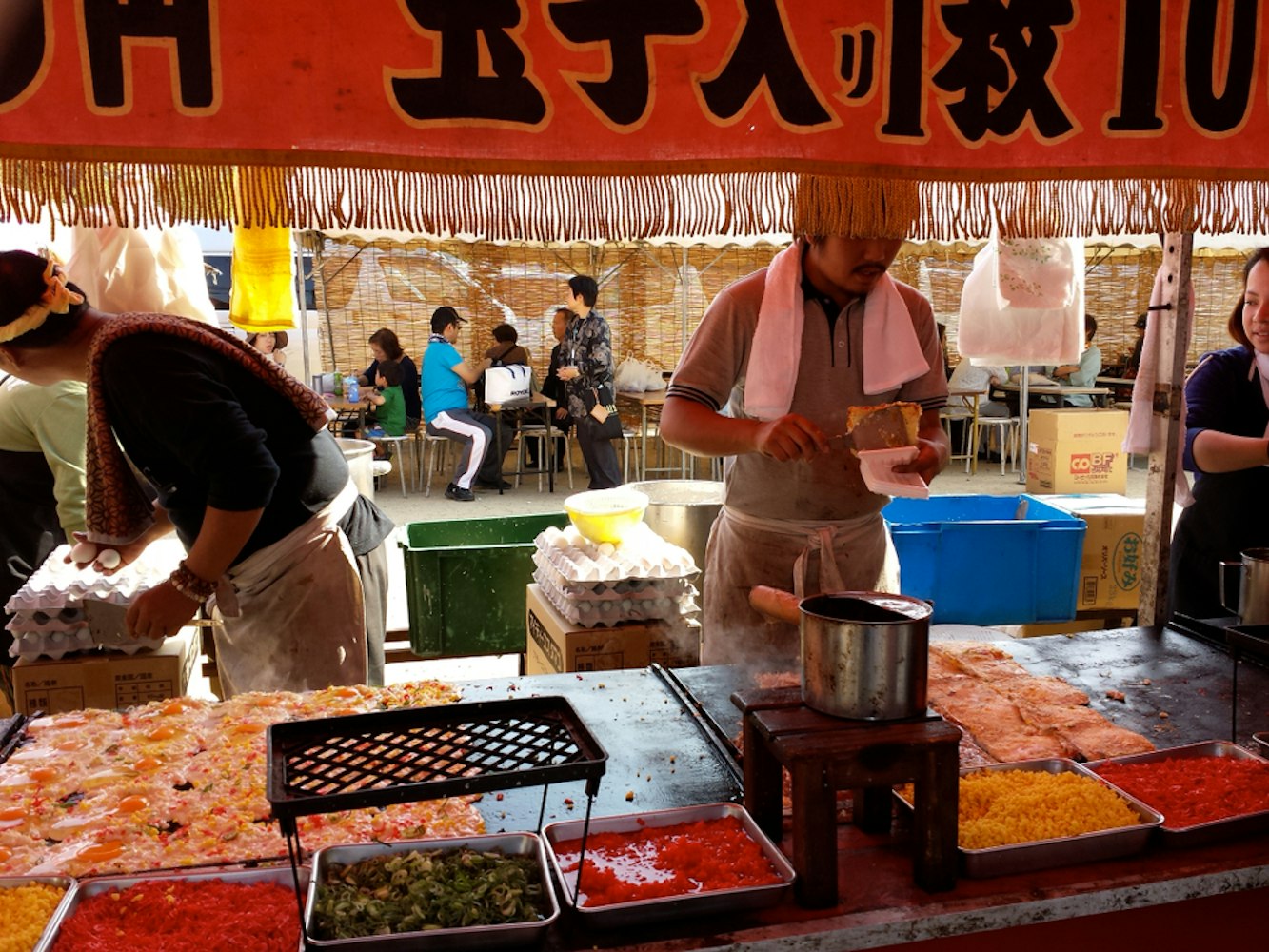
Ashiharabashi Up Market, located near JR Ashiharabashi Station in Osaka, is a vibrant local food and goods market. It operates every third Sunday, offering a range of handmade crafts, tasty foods, special treats, craft beer, organic wine, and more.
The market is notable for its diverse offerings, including live performances, making it a lively and engaging place to visit.

Shinsaibashi-Suji Shopping Street, located in Osaka, Japan, is a prominent commercial avenue stretching about 580 meters from Nagahori-dori to Soemoncho-dori. It has a rich history spanning over 380 years, dating back to the Edo Period, and is renowned as one of Osaka's most iconic shopping areas.
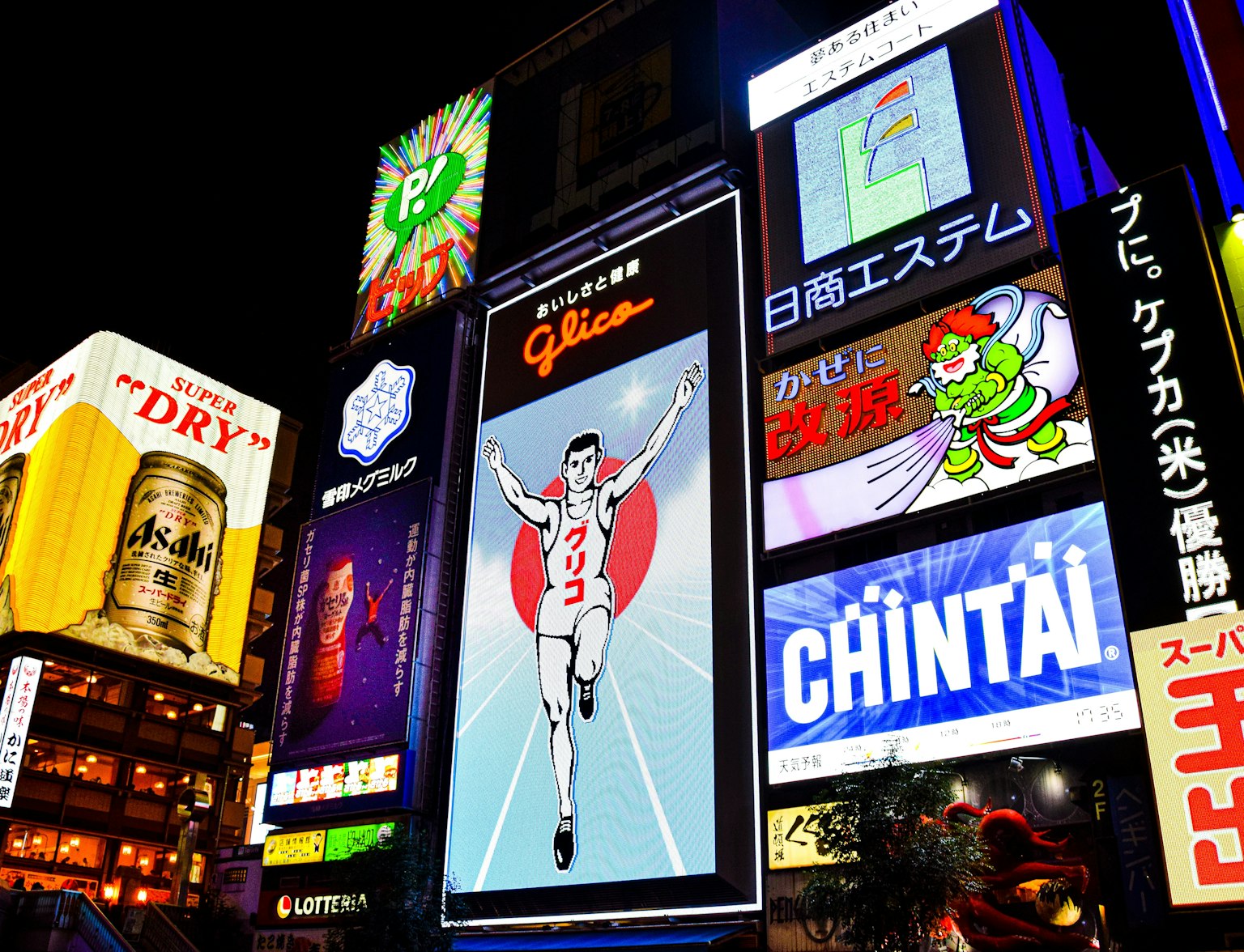
Have whatever you want at the main shopping street of Osaka Minami.
The street has diverse shops, including traditional kimono tailors, western clothing stores, restaurants, and boutiques offering the latest fashions. Additionally, Shinsaibashi-Suji is a popular destination for street food, attracting locals and tourists with its vibrant and historical ambience.
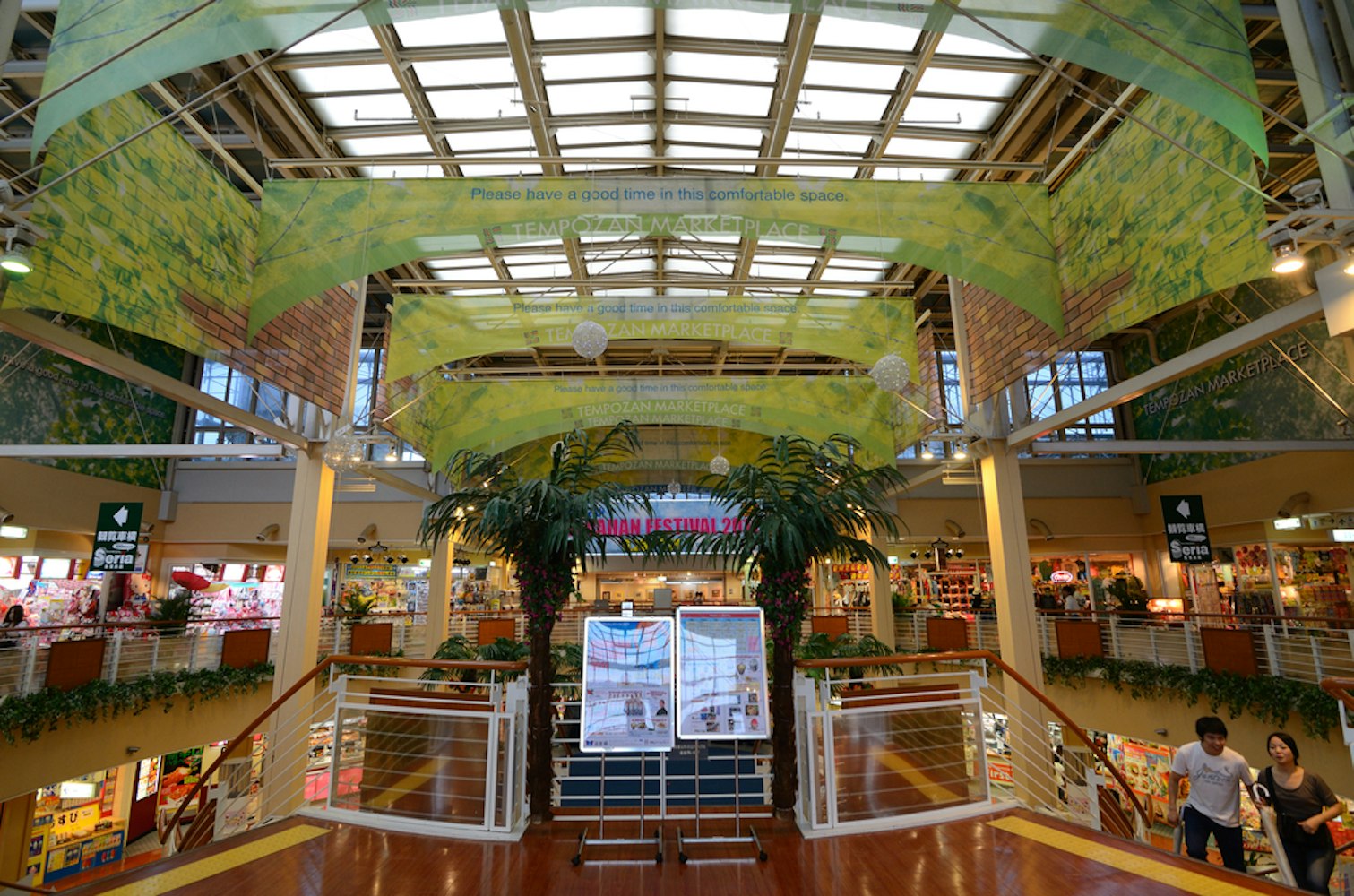
Tempozan Marketplace is a medium-sized shopping and entertainment complex near Osaka-ko Station in Osaka, Japan. It features a variety of shops and restaurants, including a food court and the Naniwa Kuishinbon-yokocho dining arcade, which offers a range of Kansai and Japanese cuisine like takoyaki and okonomiyaki.
The marketplace also serves as a venue for events and performances, with a stage and an outdoor market plaza. Additionally, it is adjacent to several attractions, including the Tempozan Ferris Wheel, the Legoland Discovery Center Osaka, and a petting zoo, making it a diverse destination for shopping, dining, and entertainment.
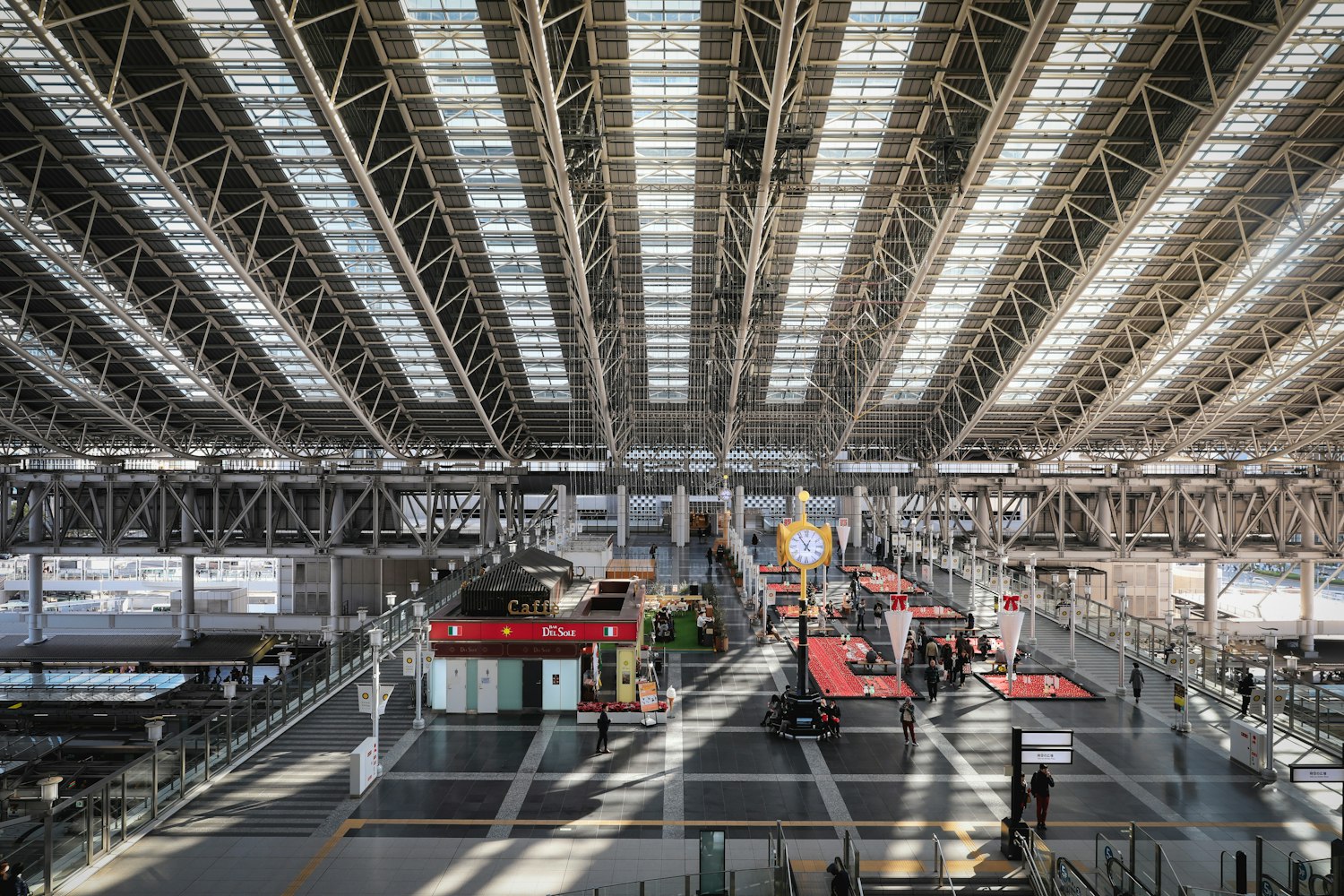
Osaka Station City is a central railway station and commercial complex located in Osaka's Umeda district, known for its extensive range of shopping, dining, entertainment, and recreational facilities. The complex, which underwent significant renovation and expansion in 2011, is characterized by a large glass roof spanning the railway tracks, creating an open and spacious environment.
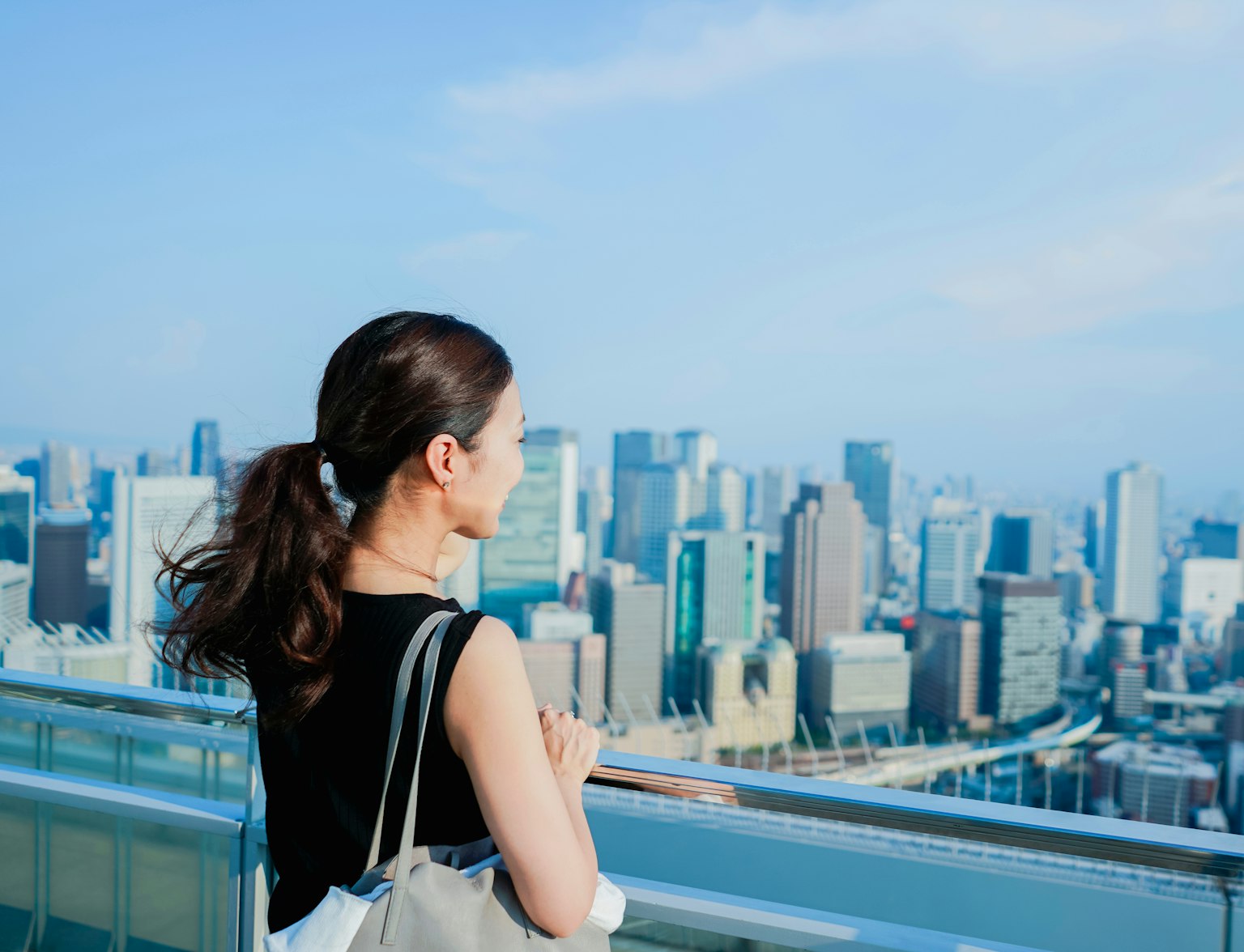
Enjoy shopping at Osaka Station City!
It includes the North and South Gate Buildings, which house department stores, a multiplex cinema, a sports club, clinics, and green spaces like rooftop gardens. The Toki no Hiroba plaza, a notable feature, bridges the two buildings and offers a unique space above the tracks for movement and relaxation.
Know Your Markets: Each market in Osaka, whether Kuromon Ichiba or Korea Town, has its unique flair. Research beforehand to align your visit with your interests.
Cash is King: Many shops or stalls and local shops in these markets prefer cash transactions. Ensure you have enough yen to cover your purchases.
Timing is Key: Some markets and seafood restaurants, like the Kuromon Ichiba, are known for their fresh fish and seafood. Visiting in the morning ensures you get the freshest produce.
Transport and Accessibility: Most markets are conveniently located near a train station. Plan your route for a leisurely visit.
Explore Local Foods: Take advantage of street food and fresh market foods. Each market offers a delicious variety of snacks and dishes.
Respect Local Etiquette: Remember, these markets are part of the daily life of local homeowners and business owners. Be respectful of their customs and business operations.
Osaka's local markets offer an excellent venue for tourists and locals to experience the city's vibrant culture and delicious food. From the fresh seafood of Kuromon Ichiba Market to the quirky souvenirs in Korea Town, there's something for everyone.
These markets are not just places for shopping; they're a journey into the heart of Osaka's culture. So, on your next trip to this fantastic city, visit these markets and discover their many charms.
Whether you're a professional cook looking for fresh ingredients or a culture enthusiast eager to explore, the local markets in Osaka are a treasure trove waiting to be investigated.
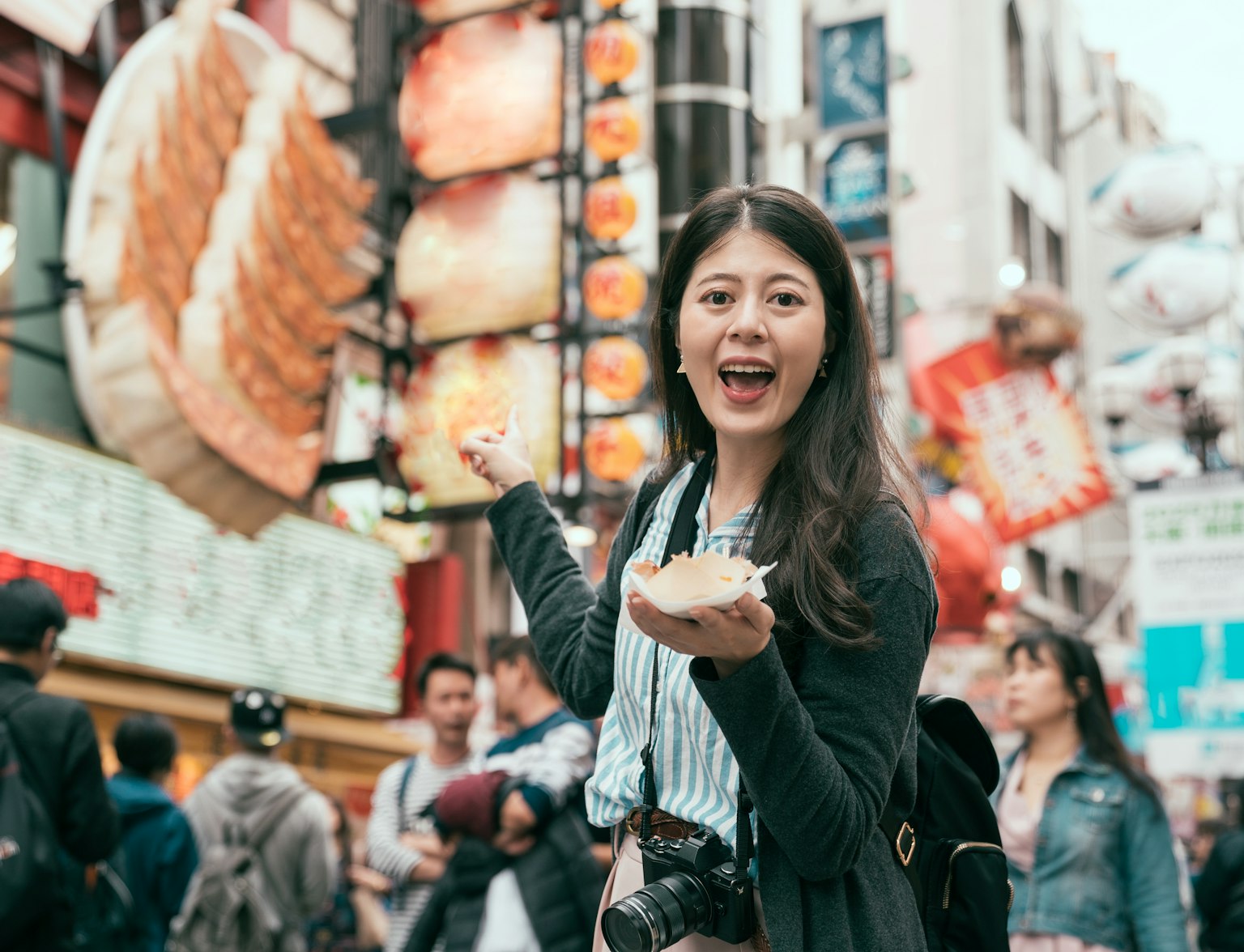
Embark on an unforgettable culinary journey through Osaka's vibrant Namba district.
